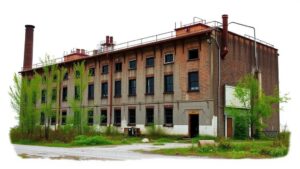Lost Bridge Crossings: Exploring Early Infrastructure for Artifact Clues
Lost Bridge Crossings: Exploring Early Infrastructure for Artifact Clues
Throughout history, bridges have served as critical links in transportation infrastructure, facilitating movement and trade. But, many of these structures have been lost due to natural degradation, infrastructural evolution, or historical neglect. Understanding these lost bridge crossings can provide valuable insights into early infrastructure, cultural practices, and regional development. This article explores the significance of these sites, their archaeological potential, and the clues they may offer regarding past societies.
The Historical Context of Lost Bridge Crossings
The construction of bridges dates back thousands of years, with some of the earliest examples found in Mesopotamia around 2000 BCE. But, during the 19th and early 20th centuries, many bridges became lost either due to modern construction techniques or under the ravages of time. For example, the now-defunct Poughkeepsie Bridge in New York, built in 1889, originally served as a vital rail link but was decommissioned in 1974. Today, researching lost crossings like this one offers historians and archaeologists unique opportunities to analyze technological advancements and community interactions.
Types of Lost Bridge Crossings
Lost bridge crossings can generally be classified into three categories: historical, cultural, and archaeological. Each of these categories provides different insights into past human activity.
- Historical Bridges: Structures documented in historical records but no longer in existence.
- Cultural Bridges: Bridges that represented cultural identities, such as the Narrows Bridge in Washington State, honoring indigenous traditions.
- Archaeological Bridges: Remnants and evidence of ancient bridges, such as those found in Rome and Greece, illustrating early engineering prowess.
Artifacts Associated with Lost Bridge Crossings
The exploration of lost bridge sites often uncovers various artifacts that can lead to a better understanding of the time period and communities that utilized these structures. Common types of artifacts include:
- Construction Materials: Remnants of ancient building techniques including mortars, stones, and woods.
- Tools and Equipment: Archaeological digs might yield tools used in the construction and maintenance of bridges.
- Personal Items: Everyday objects found near bridge sites that provide insights into the lives of people who frequented these crossings.
Case Studies of Notable Lost Bridges
Several case studies illustrate the rich potential of lost bridge crossings as archaeological sites. One of the most significant examples is the Old Stone Bridge in Pennsylvania, constructed in 1797 and lost to flood damage by 1933. Excavations revealed remnants of early settler tools, which aligned with the historical narrative of westward expansion in the United States.
Another pivotal case study is the Wye Bridge in Wales, a Roman-era structure. Investigations conducted from 2010 to 2012 uncovered evidence suggesting the bridge was part of a larger network facilitating trade across the region. Artifacts recovered included coins and pottery dating back to AD 100-300, underscoring the bridges importance in commerce during the Roman occupation.
The Archaeological Process of Discovering Lost Bridges
Uncovering lost bridge crossings involves various archaeological techniques. Key methods include:
- Geophysical Surveys: Techniques like ground-penetrating radar help locate hidden structures without disrupting the site.
- Archival Research: Exploring historical documents provides context and enables targeted excavations.
- Aerial Photography: Drone technology aids in identifying bridge remnants through landscape changes.
These methods are essential for a successful investigation and recovery of significant artifacts and data.
Challenges and Ethical Considerations
Researchers face numerous challenges when investigating lost bridges, including environmental factors, funding issues, and potential land use conflicts. There is also the ethical obligation to preserve archaeological sites amidst increasing development pressure. Collaboration with local communities and authorities is crucial to ensure responsible excavation and to promote awareness of cultural heritage.
Conclusion
The study of lost bridge crossings reveals a wealth of information about historical infrastructure, social practices, and technological advancements. By applying modern archaeological methods and maintaining ethical standards, researchers can continue to uncover vital artifact clues that enhance our understanding of early human settlements and their interactions with the environment. Future studies should prioritize interdisciplinary approaches, combining history, archaeology, and local lore to fully appreciate the significance of these vanished structures.
Actionable Takeaways
- Encourage historical societies to safeguard sites of lost bridges through documentation and preservation efforts.
- Promote community involvement in archaeological projects to foster appreciation for local heritage.
- Advocate for increased funding in archaeological research, particularly in areas with rich historical landscapes.



